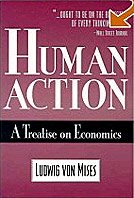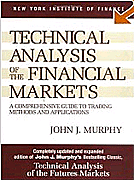Chapman University calls for a Recession in 2008
The A. Gary Anderson Center for Economic Research at Chapman University, CA, on December 5 released their annual economic forecast for the U.S., California and Orange County.
Here is an excerpt from their forecast:
• The Anderson Center is forecasting a recession in 2008. Although real GDP growth is forecasted to dip to –1.0 and –1.9 in the first and second quarters, respectively, a pick-up in the second half of the year is expected to lead to slow but positive annual growth of 0.9 percent.
• Gains in nonresidential construction are no longer offsetting losses in residential construction. Current estimates point to a decline of $91 billion in total real private construction spending in 2007, and we are projecting an even steeper decline of $125 billion in 2008.
• Much of the recent increase in consumer spending has been financed by households cashing out a portion of their home equity gains by refinancing their loans. But total home equity cashed out is estimated to decline by almost $60 billion in 2007. We are projecting an additional decline of $130 billion in 2008. The resulting negative hit on consumer spending will be considerable, especially when it is coupled with the impact of higher energy costs on reducing spending.
• The only major positive trend, at least with regard to spending, is a continuation of rapid growth in exports that is forecasted to hit 10.2 percent in 2008. This growth is explained, in part, by the fact that global growth, spurred on by emerging nations, has far outpaced that of the U.S.. In addition, the sharp fall in the U.S. dollar has made U.S. goods and services more competitive in global markets.
• Declines in construction spending, coupled with continued job losses in the mortgage banking industry and other real estate services, will have a pronounced negative impact on job growth. After peaking at 1.9 percent in 2006 and declining to 1.3 percent this year, U.S. payroll job growth is forecasted to drop to 0.2 percent in 2008.
• With the inventory of unsold homes increasing sharply and the confidence level of home builders reaching an all-time low, housing starts are projected to decline for the third consecutive year to approximately 1.1 million in 2008. This would be the lowest level of housing starts since 1991.
• An increase in the supply of homes available for sale (new, foreclosed and resale) points to further declines in housing prices. Following an average decline of 2.1 percent in 2007, home prices are forecasted to decline 4.8 percent in 2008.
• The Fed’s favorite indicator of price change, the core personal consumption expenditures price index, is forecasted to stay within the Fed’s comfort range with core inflation not exceeding two percent until the third quarter of next year.
• It’s too late, however, for Fed action to significantly affect overall spending through the first half of 2008. Lower short-term interest rates are also unlikely to reverse the major negative forces hitting the economy in 2008.
• We are projecting a sharp increase in foreclosures in 2008. Our estimates suggest a loss in bond value holdings resulting from these foreclosures to be roughly $350 billion. This loss in "paper wealth" is expected to lead to a significant decline in consumer spending and to further credit tightening.
For California, Chapman forecasts that "sluggish housing demand will extend into 2008," and 12,000 jobs will be generated next year, "an increase of only 0.1%."
In Orange County, "housing affordability index deteriorated sharply since 2002. In 2006, a potential homebuyer with median family income of $76,300 needed 49.9 percent of family income to purchase a median single family home, even after taking into account the tax savings of deducting mortgage interest and property taxes."
For the entire study please click HERE
Here is an excerpt from their forecast:
• The Anderson Center is forecasting a recession in 2008. Although real GDP growth is forecasted to dip to –1.0 and –1.9 in the first and second quarters, respectively, a pick-up in the second half of the year is expected to lead to slow but positive annual growth of 0.9 percent.
• Gains in nonresidential construction are no longer offsetting losses in residential construction. Current estimates point to a decline of $91 billion in total real private construction spending in 2007, and we are projecting an even steeper decline of $125 billion in 2008.
• Much of the recent increase in consumer spending has been financed by households cashing out a portion of their home equity gains by refinancing their loans. But total home equity cashed out is estimated to decline by almost $60 billion in 2007. We are projecting an additional decline of $130 billion in 2008. The resulting negative hit on consumer spending will be considerable, especially when it is coupled with the impact of higher energy costs on reducing spending.
• The only major positive trend, at least with regard to spending, is a continuation of rapid growth in exports that is forecasted to hit 10.2 percent in 2008. This growth is explained, in part, by the fact that global growth, spurred on by emerging nations, has far outpaced that of the U.S.. In addition, the sharp fall in the U.S. dollar has made U.S. goods and services more competitive in global markets.
• Declines in construction spending, coupled with continued job losses in the mortgage banking industry and other real estate services, will have a pronounced negative impact on job growth. After peaking at 1.9 percent in 2006 and declining to 1.3 percent this year, U.S. payroll job growth is forecasted to drop to 0.2 percent in 2008.
• With the inventory of unsold homes increasing sharply and the confidence level of home builders reaching an all-time low, housing starts are projected to decline for the third consecutive year to approximately 1.1 million in 2008. This would be the lowest level of housing starts since 1991.
• An increase in the supply of homes available for sale (new, foreclosed and resale) points to further declines in housing prices. Following an average decline of 2.1 percent in 2007, home prices are forecasted to decline 4.8 percent in 2008.
• The Fed’s favorite indicator of price change, the core personal consumption expenditures price index, is forecasted to stay within the Fed’s comfort range with core inflation not exceeding two percent until the third quarter of next year.
• It’s too late, however, for Fed action to significantly affect overall spending through the first half of 2008. Lower short-term interest rates are also unlikely to reverse the major negative forces hitting the economy in 2008.
• We are projecting a sharp increase in foreclosures in 2008. Our estimates suggest a loss in bond value holdings resulting from these foreclosures to be roughly $350 billion. This loss in "paper wealth" is expected to lead to a significant decline in consumer spending and to further credit tightening.
For California, Chapman forecasts that "sluggish housing demand will extend into 2008," and 12,000 jobs will be generated next year, "an increase of only 0.1%."
In Orange County, "housing affordability index deteriorated sharply since 2002. In 2006, a potential homebuyer with median family income of $76,300 needed 49.9 percent of family income to purchase a median single family home, even after taking into account the tax savings of deducting mortgage interest and property taxes."
For the entire study please click HERE
Labels: financial crisis















![[Most Recent Quotes from www.kitco.com] [Most Recent Quotes from www.kitco.com]](http://www.kitco.com/images/live/t24_au_en_usoz_6.gif)
![[Most Recent Quotes from www.kitco.com] [Most Recent Quotes from www.kitco.com]](http://www.kitco.com/images/live/au_go_0030_ny.gif)
![[Most Recent Quotes from www.kitco.com] [Most Recent Quotes from www.kitco.com]](http://www.kitco.com/images/live/au_go_0365_ny.gif)
![[Most Recent Quotes from www.kitco.com] [Most Recent Quotes from www.kitco.com]](http://kitconet.com/charts/metals/silver/t24_ag_en_usoz_4.gif)

















0 ΣΧΟΛΙΑ (COMMENTS):
Post a Comment
<< Home